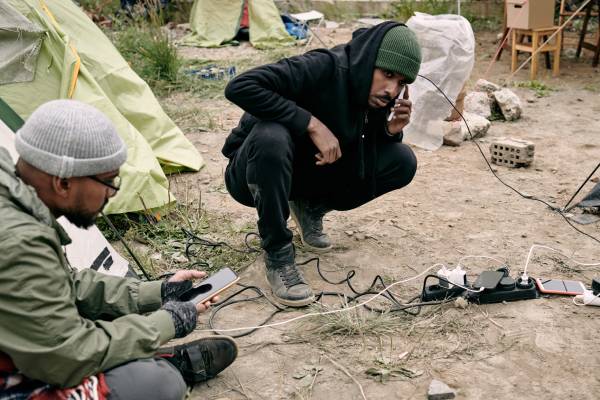
What is the digital divide and how can we address it?
What is the digital divide and how can we address it?
A gap that must be bridged
Reading time: 7 min
What is the digital divide?
What is the digital divide?
The digital divide refers to the existing divide between people who have access to the Internet and Information and Communication Technologies (ICT), and those who do not, or who have limited access.
There are many advantages to the Internet and other technologies associated with the so-called Fourth Industrial Revolution: They allow us to enjoy series on our tablet or computer, learn a new skill in an online course, or complete banking transactions with just a few clicks of the mouse. However, not the entire population has access to the Internet or the same digital know-how, which creates major technology gaps. This translates into inequalities among the population even within the same country.
Although the number of people connected to the Internet keeps on growing, there are still almost three billion people around the world who can't access the digital environment, making this one of the main reasons causing the digital gap. Despite significant progress being made in this regard, especially as a result of the COVID-19 pandemic, the fact that part of the world's population lacks the necessary know-how and tools to use ICTs is an additional challenge for their economic and professional development, among other aspects.
Consequences of the digital divide
Consequences of the digital divide
Difficulty in accessing ICTs increases inequality among different groups, as it prevents part of the population from accessing the possibilities they offer. For example, during the lockdown, where many schoolchildren were forced to continue their classes online, the lack of a stable connection and the appropriate devices meant some students were unable to keep up their schooling as normal. The same happened with working from home: adults who lacked the right tools and know-how were limited in their ability to work as normal. Therefore, let's take a look at the different causes of the digital divide are:
- Isolation: Social isolation is one of the characteristics of the digital divide, especially as a result of the pandemic, has increased among people who do not have access to the Internet. Additionally, people living in rural areas without reception are virtually cut off from communication services.
- Difficulty in accessing education: The lack of access to ICTs makes it difficult for both children and adults to access education. According to a report by the International Telecommunication Union (ITU), published together with UNICEF, 63% of young people between 15 and 24 years of age do not have an internet connection at home.
- A barrier to accessing work: People face greater difficulties in finding a job, not only because digital know-how is increasingly necessary but also because they are unable to check online job websites where these offers are published.
- Social differences: The obstacles to connecting to the digital world make the differences between groups more evident.
- Geographical differences: These are also intensified between regions and countries, which directly affects their possibilities for growth.
- Dependence and vulnerability: Technological discrimination means that some people have less independence in performing certain tasks, which in turn makes them more vulnerable (e.g., digital crime).

Do you have a STEM profile?
Do you have a STEM profile?
We're seeking talent to help sustainably create value
We're proud that 81% of our employees recommend us.




